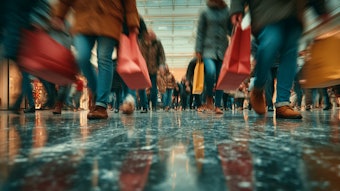Previously: Beauty Innovation in Asia Pacific.
The Asia-Pacific cosmetics market—comprising Japan, China, India, South Korea, Singapore and Thailand—will grow at a compound annual growth rate (CAGR) of 4.02%, reaching $126.8 billion by 2020, according to a new report. Japan remains the highest revenue-generating market in the region, comprising two sevenths of 2014's cosmetics share, while forecasting CAGR through 2020 of 2.7%.
A number of leading brands have worked to capture this growth, including players such as Biotique, L'Oréal, Avon, Procter & Gamble, Unilever, Oriflame Cosmetics, Revlon, Kao, Estee Lauder and Shiseido. These brands will continue to pursue growth through product launches and expansions in the region, according to the report.
But what, exactly, is driving the Asia Pacific cosmetics boom?
Men Boosting Cosmetics
Men currently account for 19% of the revenue share of the Asia Pacific cosmetics market, according to apacmarket.com's report, and represent the fastest-growing user segment of cosmetics, registering a CAGR of 9.2% through 2020. In fact, rising adoption of cosmetic products among men in China, India and Japan is creating new growth in the region.
Men play a significant role in the skin care and sun care product categories, which represent three sevenths of the cosmetics sector and comprise the largest revenue share of the market. While women dominate color cosmetics sales, men and women alike are driving sun and skin care sales across all countries in the region. As a result, skin and sun care will increase its share of the cosmetics sector through 2020.
The most popular product categories among Asia Pacific men are shampoos, conditioners, hair styling creams and gel, hair color, moisturizing lotions, facial wipes, deodorants and fragrances.
Recent launches aimed toward men detailed in the report include Himalaya's Intense Oil Clear Lemon Face Wash, in the skin care category, in India.
The Appeal of Natural and Organic Cosmetics
This increase in cosmetics sales reflects an overall rise in consumers' awareness of personal appearance and corresponds to a rise in disposable incomes, according to the report.
Simultaneously, Asia Pacific consumers have become increasingly aware of organic products. Brands such as Himalaya, Biotique and Skin Food have stepped in to meet this demand.
Cosmetic Sales Channels
Supermarkets are the dominant sales channels in the region and, to a lesser extent, multi-brand and standalone stores, according to the report. However, online cosmetic sales platforms in Asia Pacific are forecast to grow at a CAGR of 10.3% through 2020.










